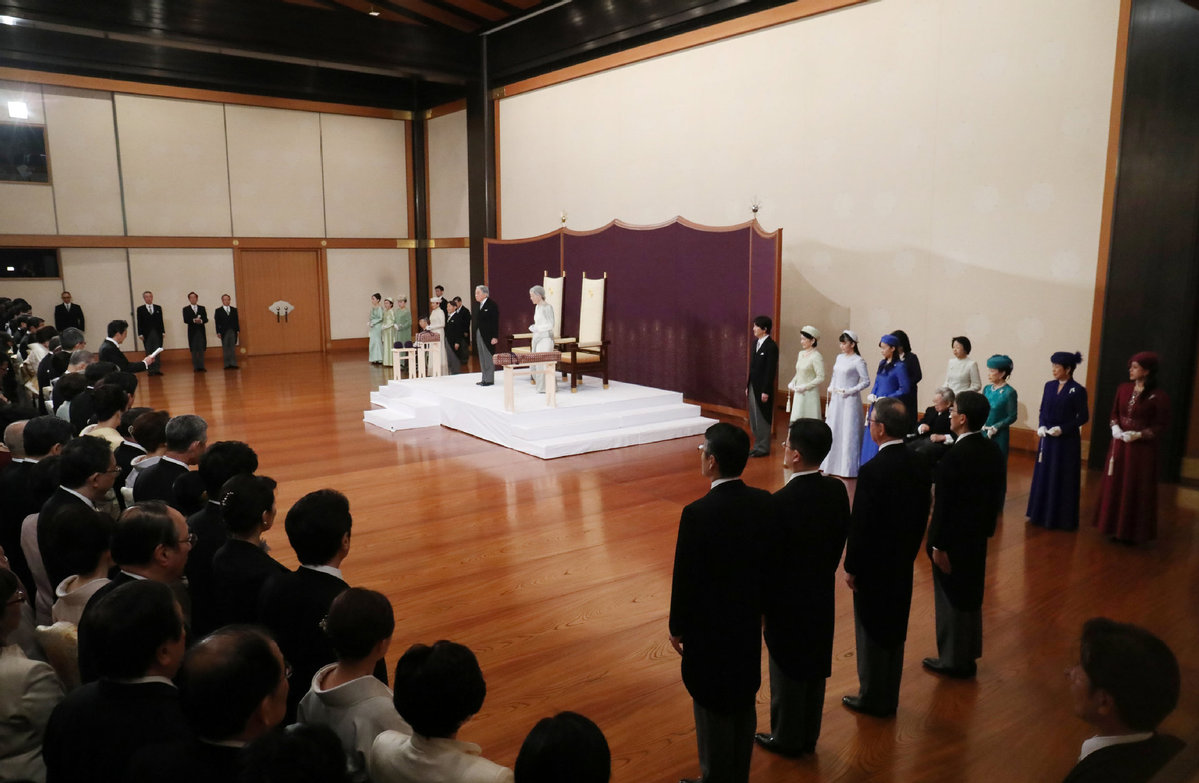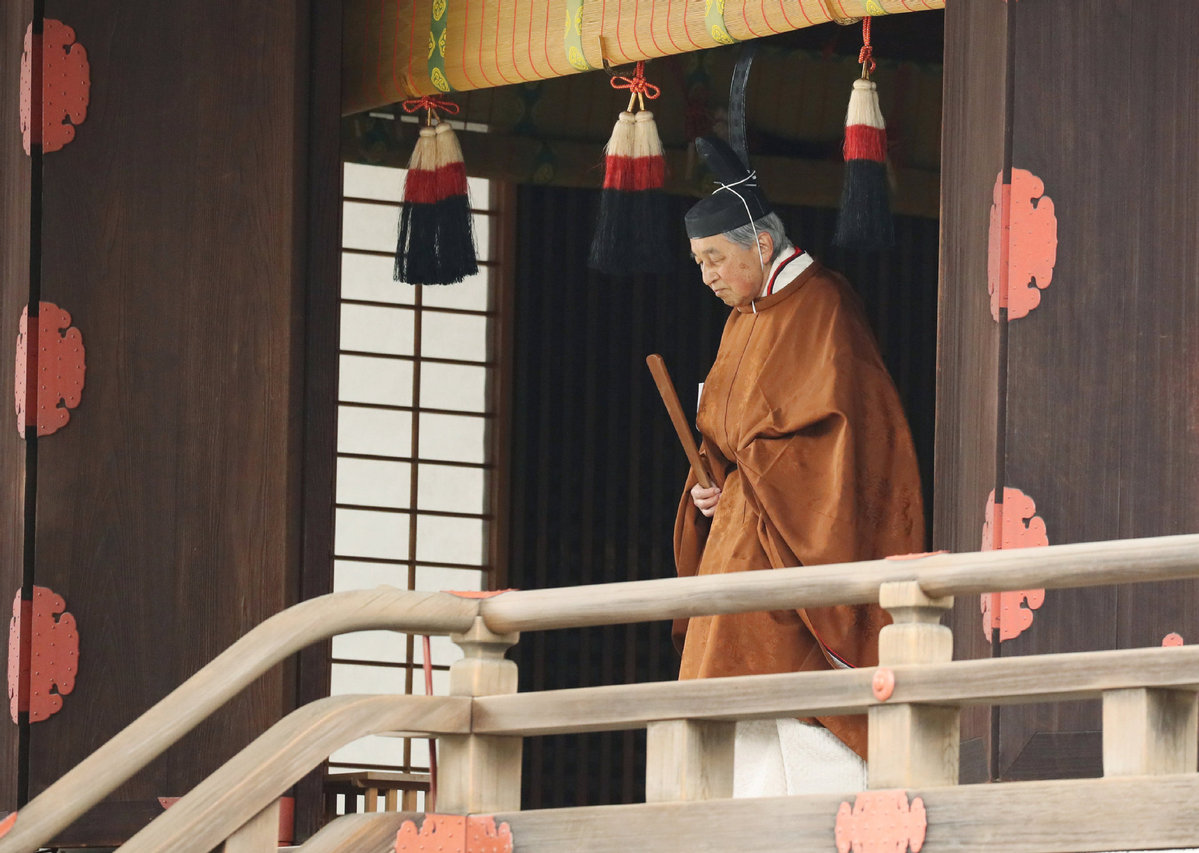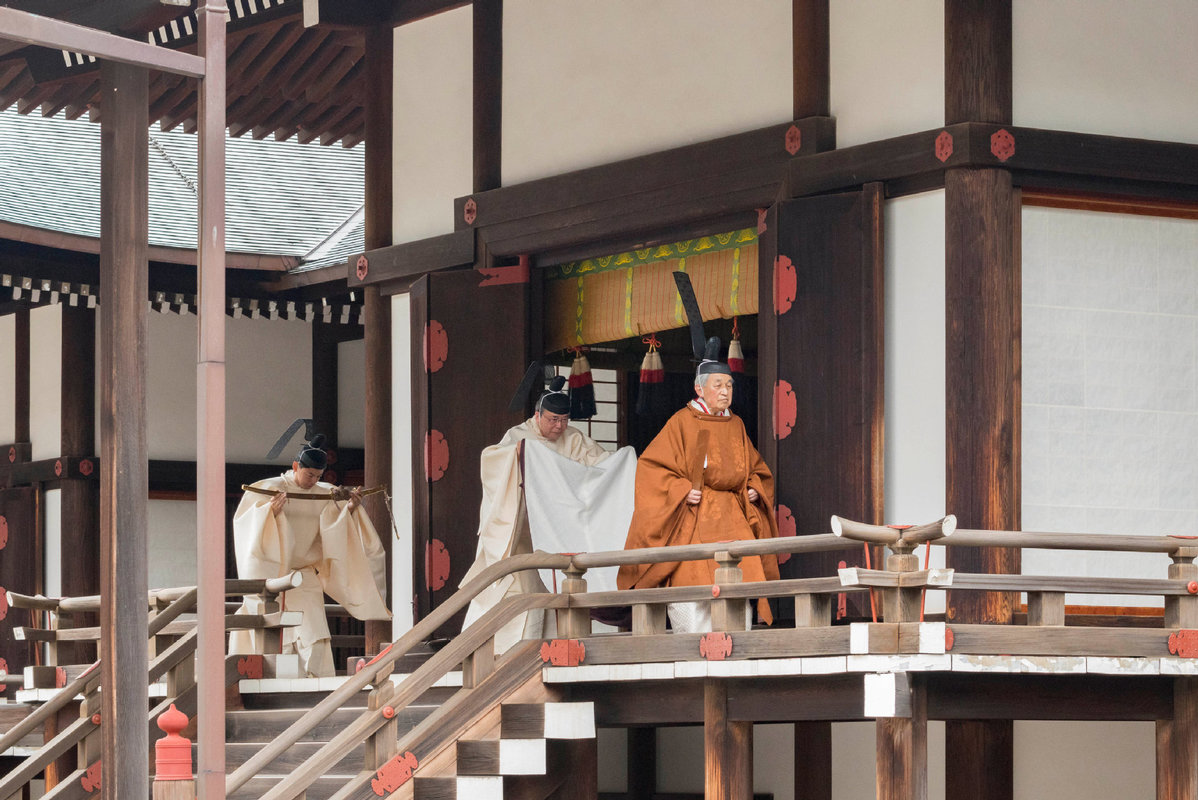Emperor Akihito abdicates, Japan embraces end of era
Updated: 2019-04-30 16:01

TOKYO - Japanese Emperor Akihito, in his final remarks as his three-decade reign drew to a close on Tuesday, thanked the people for their support and expressed hope for a peaceful future.
Akihito, 85, was the first Japanese monarch enthroned under a post-war Constitution that defines the role of the monarch as a merely a "symbol of the State."
"To the people who accepted and supported me as a symbol, I express my heartfelt thanks," Akihito, wearing a Western-style morning coat, said at a brief abdication ceremony in the Imperial Palace's Matsu no ma, or Hall of Pine.
"Together with the empress, I hope from my heart that the new Reiwa era that begins tomorrow will be peaceful and fruitful, and pray for the peace and happiness of our country and the people of the world," said a solemn Akihito, referring to the new imperial era, standing flanked by Empress Michiko, who wore a long white and grey dress.

About 300 people attended the ceremony and it was broadcast live on television.
Akihito, together with Michiko, his wife of 60 years and the first commoner to marry an imperial heir, carved out an active role as a symbol of reconciliation, peace and democracy.
Those at the abdication ceremony included Prime Minister Shinzo Abe, Crown Prince Naruhito and Crown Princess Masako, as well as the heads of both houses of parliament and Supreme Court justices.
Imperial chamberlains carried state and privy seals into the hall along with two of Japan's "Three Sacred Treasures" - a sword and a jewel - which together with a mirror are symbols of the throne. They are said to originate in ancient mythology.
“While keeping in our hearts the path that the emperor has walked, we will make utmost efforts to create a bright future for a proud Japan that is full of peace and hope,” Abe said ahead of the emperor's remarks.

Earlier in the day, Akihito reported his abdication in sanctuaries inside the Imperial Palace, including one honouring the sun goddess Amaterasu Omikami, from whom mythology says the imperial line is descended, and two others for departed emperors and Shinto gods.

Video aired on NHK public television showed Akihito, wearing a dark orange traditional robe and black headdress, walking slowly into the first sanctuary as a courtier in a white robe walked behind holding the train and another carried a sword.
Crown Prince Naruhito conducted a similar ceremony, NHK said.
























